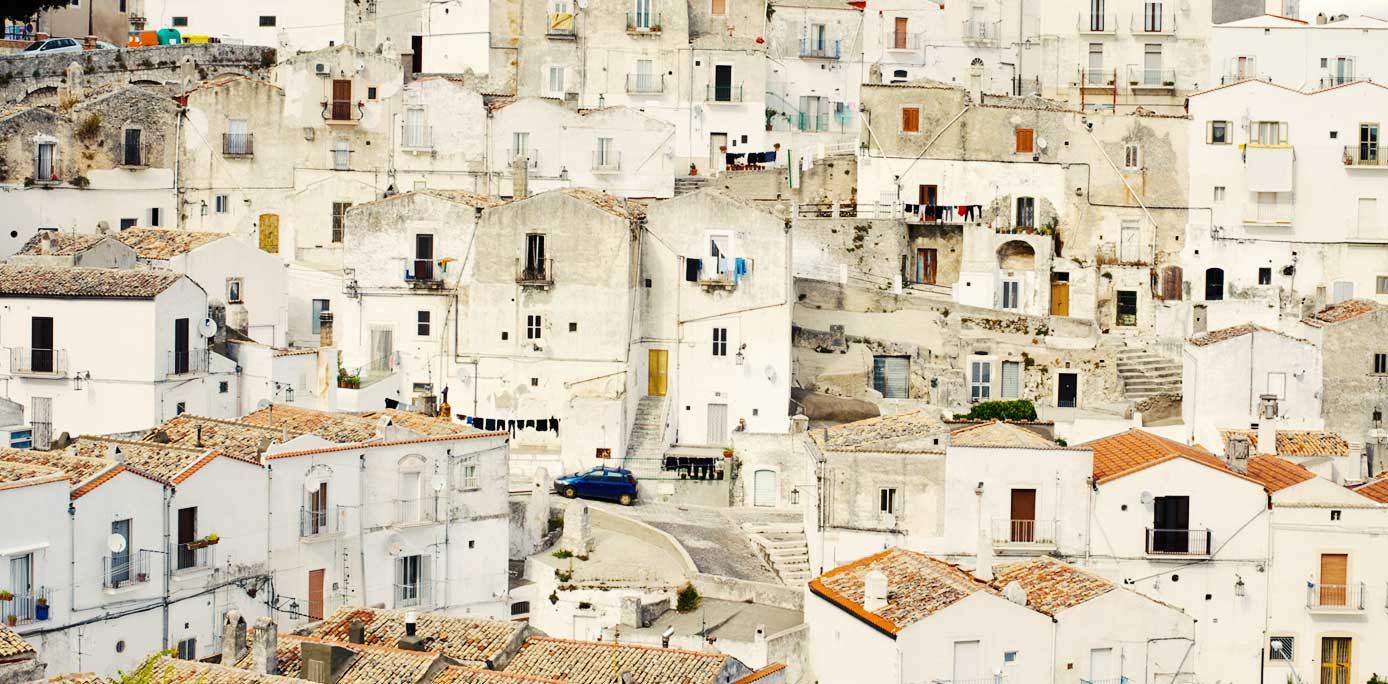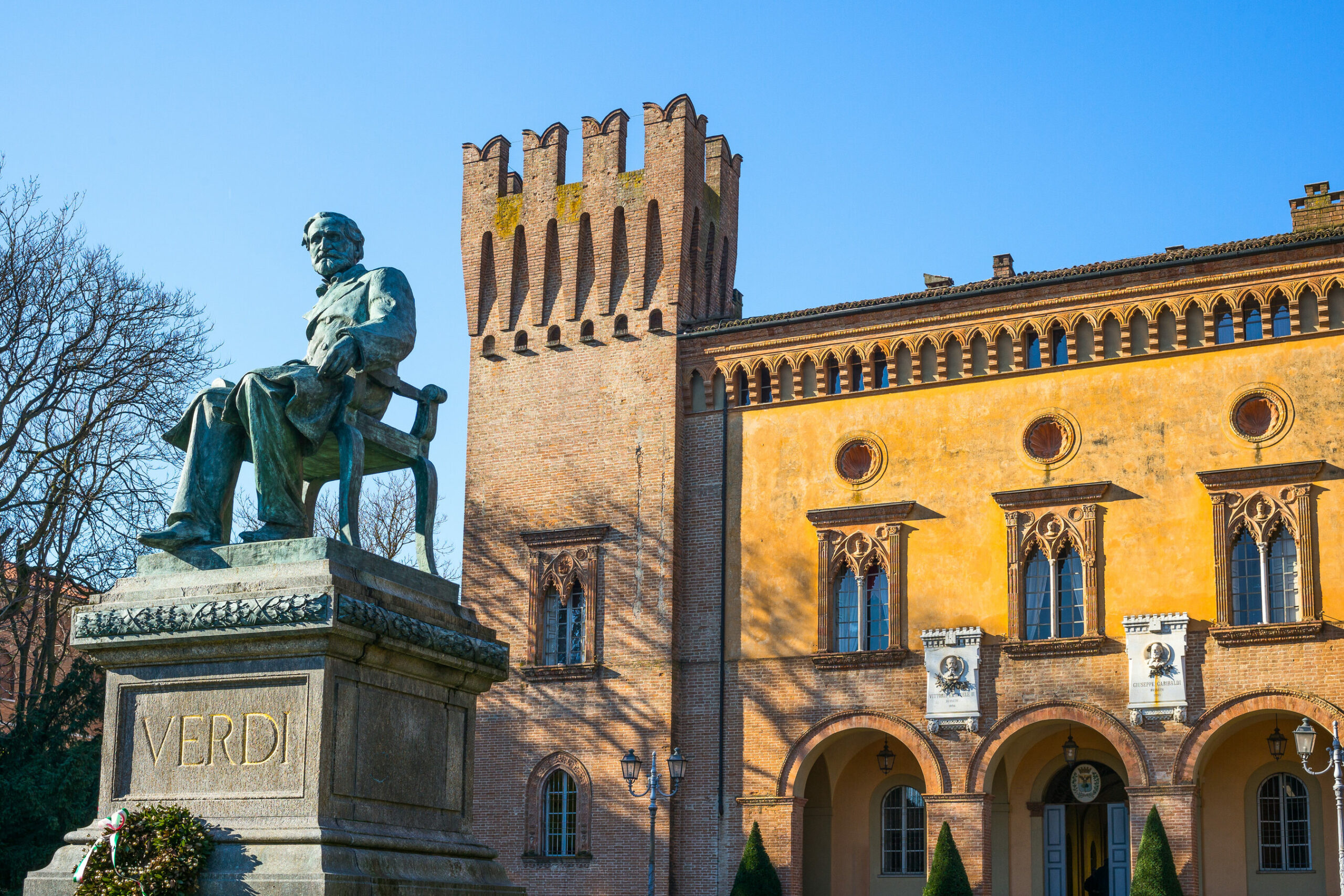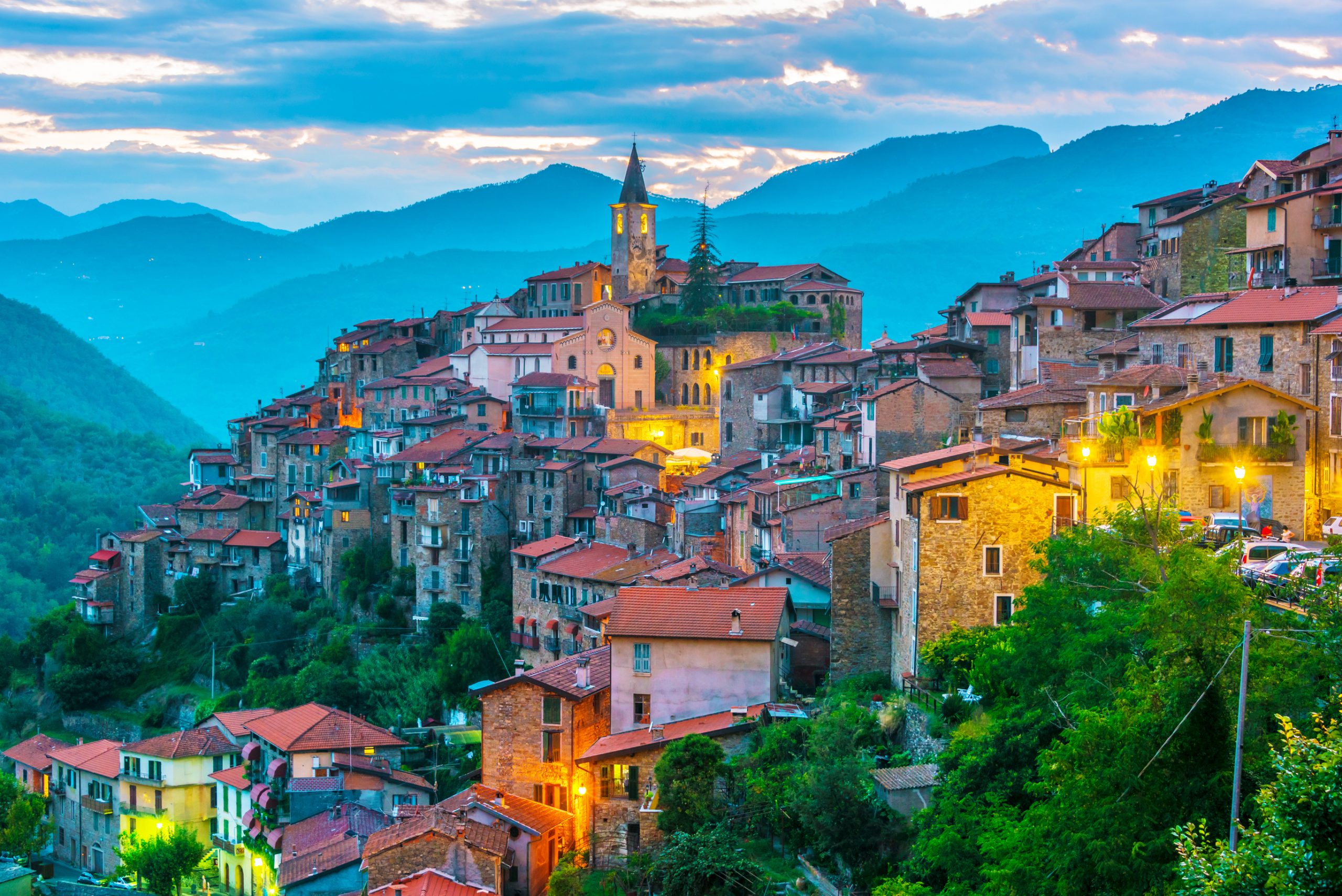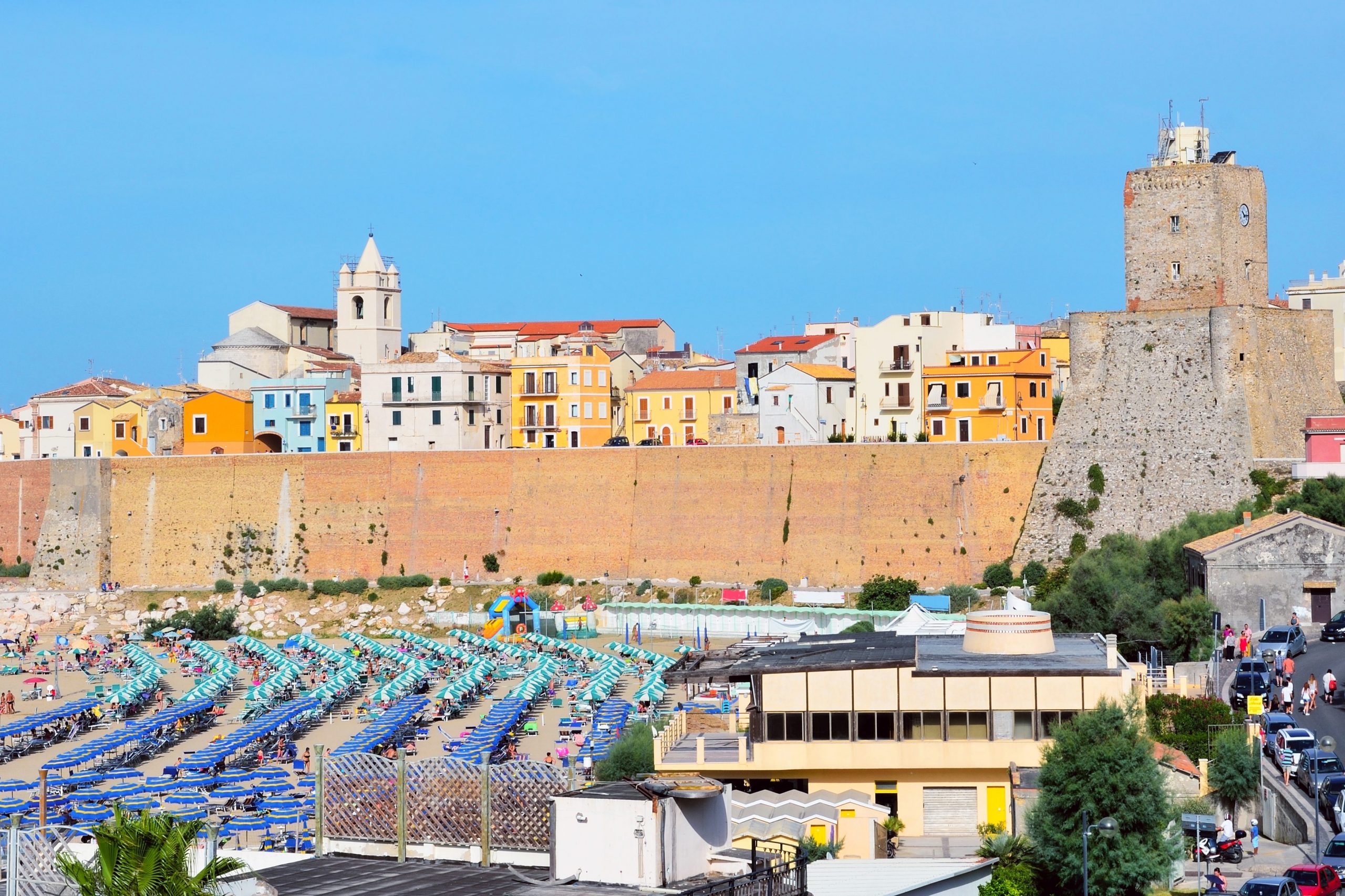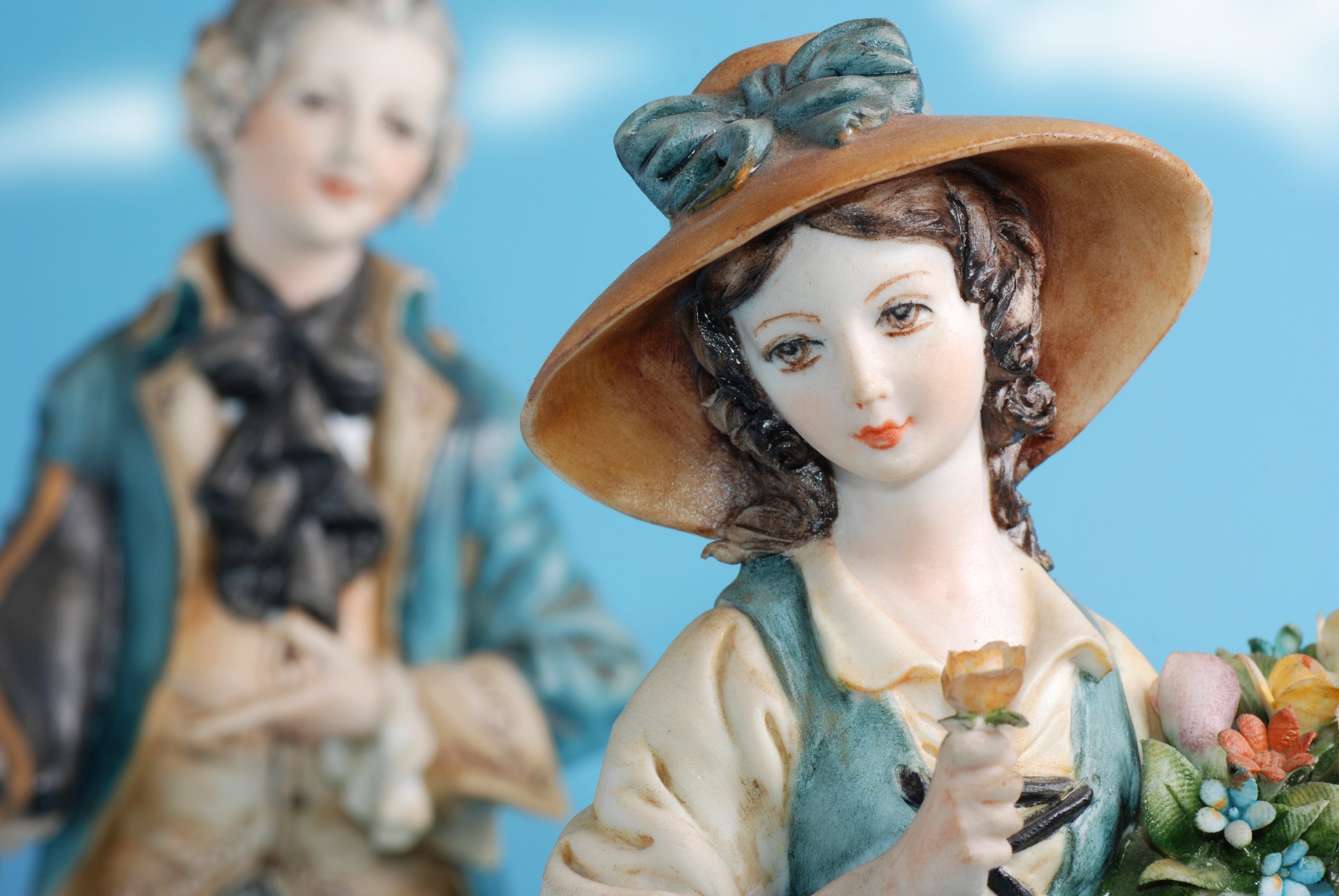The Adriatic coast of Italy is one with many secrets, among which two sites that have been visited by angels of all stripes: some of them have hovered over the land for centuries.
Perhaps today they have finally vacated the territory, because the many traditional – and sometimes weary sagre that used to attract every member of the villages around have more likely become celebrations of the local sports team with balloons and banners of all colors, instead of religious processions featuring holy relics from some patron saint or other.

Torremaggiore, a village known for its connection with Frederick II and “angelic” legends
The many earthquakes that have rumbled through the glades and mountain passes of the terrain may perhaps explain this secularization of the locale to which one must likewise add the effects of the modern means of communication —twitter, Facebook, and television in general.Nonetheless, history still records certain world-shaking events that continue to draw people who appreciate the spectacular beauty of the sandy shore towns and cities of the region. From Termoli down to Monte Gargano and with side excursions to Andria and Torremaggiore, there are legendary memories that make one think about how men great and small met their angel, either for good or otherwise.

The cave where the Archangel Michael is believed to have appeared
Take for example the legend of the Holy Roman Emperor, the mighty and first cosmopolitan citizen of Europe (as some have called him), Frederick II. Losing his father, Frederick I, and mother, Constance of Sicily, when only four years old, Frederick grew up under the guardianship of the learned Cencio Savelli, soon to be Pope Honorius III.
Due to his prodigious curiosity about the many different people of Sicily, Frederick spent a great deal of time roaming the streets picking up a keen knowledge of the common people from Muslim neighborhoods and lands and soon acquired a working knowledge of their Arabic language. Under his formal tutors, he also learned Latin and Greek and of course spoke the medieval Sicilian of his everyday experiences, as well as the Middle High German of his father and grandfather. At the age of 14, he proclaimed himself able to take on the responsibilities of his royal domains and undertook all necessary campaigns to effect this, often crossing swords with papal policy. But since he was an astute diplomat, he soon amassed such a high and secure reputation that many scholars and poets flocked to his courts.

Torremaggiore
Among these one can point to Pier della Vigna whom Dante cast into the bolge of the Inferno, but who nonetheless helped develop the fashion of composing poems and other writings in the local idiom which are considered the very first steps in the creation of Italian literature.
Another person of letters who became a very close intimate of Frederick was Michael Scot or Scotus. Was he an Irishman or a Scot is still debated today since the medieval usage of word Scotus could apply to either country. However, early on in his career, Scotus migrated to Spain where he associated closely with Jewish and Arabic scholars who busied themselves with translating ancient Greek texts that had been previously translated into the Arabic language. Clearly, this experience turned Michael Scot into a kindred spirit with Frederick II, similarly endowed with parallel linguistic skills. All this resulted in the two men being very much drawn into discussions of mathematics, astronomy, astrology, as well as other esoteric matters.
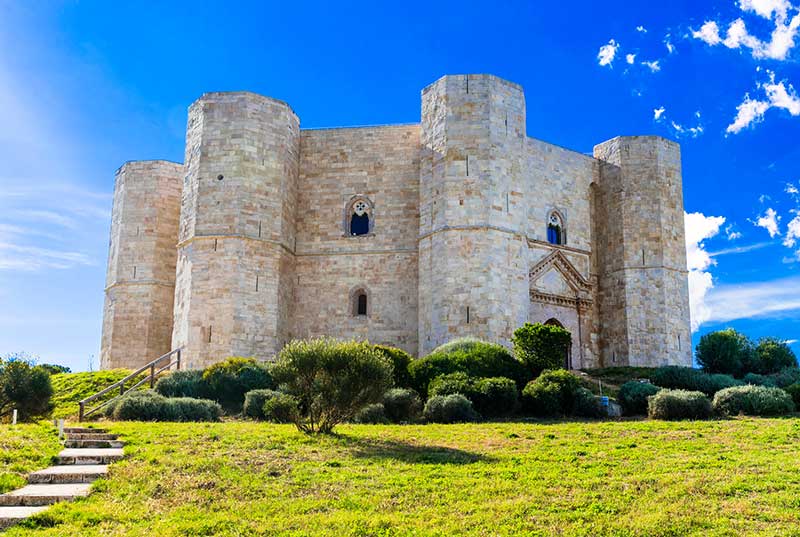
Castel del Monte, in Apulia, built by Frederick II
Under the sway of such stimuli, perhaps among the most curious experiments Frederick engaged in was building the Castel del Monte near the city of Andria in 1240. Meticulously constructed with eight sides, it fully extolled the mysterious fascination of Templar alchemists for the mystical power of the number eight. The castle is not considered to have been used as a fortress for the protection of the land, but instead seems to have been a spa palace for the restoration of health, since its center hall one time boasted a huge white marble-lined pool. Whether rituals for the conjuring of spirits were performed there in Fredrick’s time is hypothetical. Yet, possibly, the construction of the castle endowed it with some magical power because, curiously enough, in 1950 it was discovered that the soil surrounding the castle contained a strain of bacterium that led to the development of chemotherapeutic cancer drugs (daunorubicin and doxorubicin) that help patients avoid seeing any “angels” any time soon.
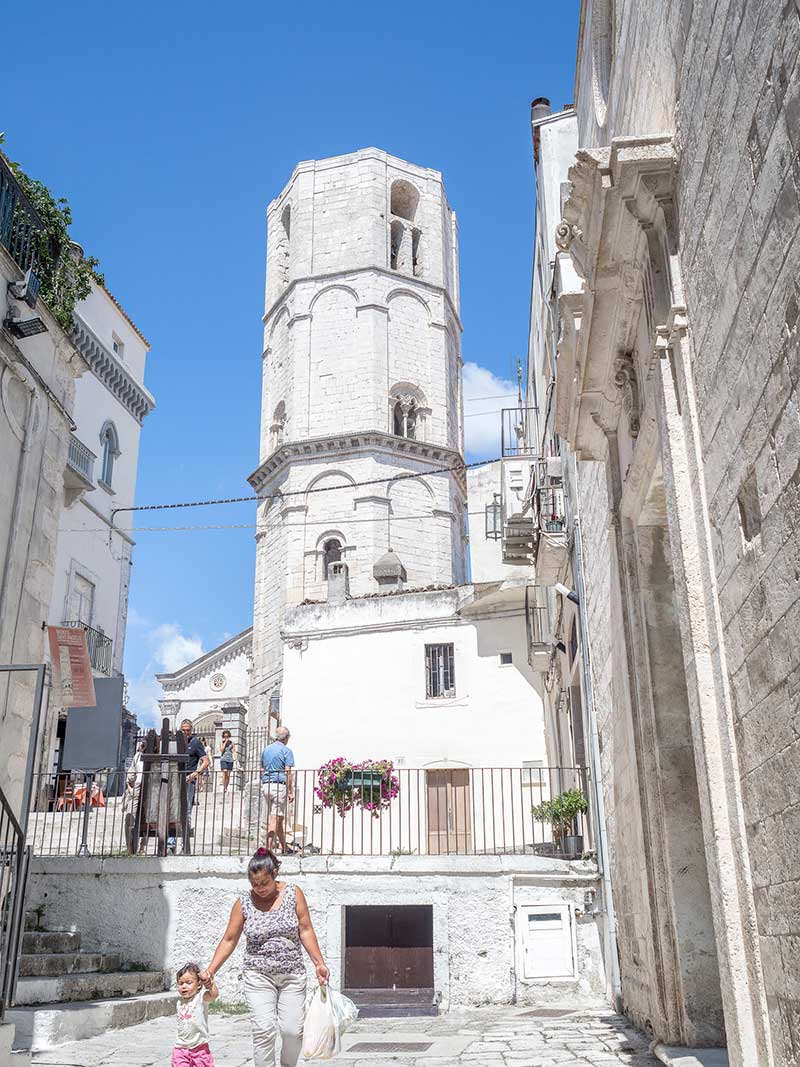
Torremaggiore, a location tied with the life and fate of Frederick II
Along these lines, Michael Scot was reputed to be a magus, one who could prophesy the future, and who engaged in many paranormal experiments. Of note here is that, despite his numerous philosophical-astrological treatises, he is primarily remembered today as having foretold the death of Frederick II, Apud portam ferream, ne lo loco che abet lo nome de flore”, (i. e., at the iron door of the place that has the name of “flower”). And so, like any superstitious person of his times, Frederick II always avoided going near Florence since he feared he might meet an untimely death there. But uncannily, as foretold to him, when he was about 55 years old, he found himself in Apulia, a province he loved dearly for the many opportunities it offered for hunting, where he fell gravely ill with a severe dysentery. His attendants ferried him off to his closest imperial property, Castel Fiorentino, and then placed him there on a bed right in front of an iron door. And so, just as Michael Scot had predicted, he was visited by the angel of death, known as Asrael in the Islamic religion, on December 13, 1240.
Today, the remains of the citadel comprise an archaeological site that beckons many “angelic” tourists to the town of Torremaggiore. But it can be easily viewed on YouTube where an eight-sided stone column is inscribed with the bilingual notice, In quel tempo morì Federico, il più grande tra i principi della terra Stupore del Mondo — Et Semper Augustus Rex Ierusalem Et Sicilie Dux Sveviae. (In that time died Frederick the greatest of all the princes of the earth, the Stupor Mundi, and the Eternal High King of Jerusalem and Sicily, Duke of Swabia).

Torremaggiore, a village known for its connection with Frederick II and “angelic” legends
So now, let’s leave aside all these ancient royal legends and continue along the Adriatic coast to visit a sacred site that causes not only noble, but plain ordinary people today to wonder about the visits of another angel, this time one of health, protection and goodness, the Archangel Michael.
After a long ascent up the side of Mount Gargano, also known to the faithful as Monte Sant’Angelo, one safely arrives at the very top to join the myriad numbers of pilgrims who come from all over to make a visit to the grotto of St. Michael Archangel. Among the many who have done this, St. Francis of Assisi, Padre Pio and recent popes (Benedict XVI, John Paul II and Francis).
The archangel visited the locale’s cave twice. The first time was in 490 when he saved a bull from a deadly arrow shot by his exasperated owner, who was unable to get it to come out of the place. The arrow flew backwards and sent Lord Elvio running off to report the strange event to the local bishop. Three days later, the bishop was himself visited by Saint Michael who instructed him to set up a chapel in the cave. He did so, and when his town of Siponto later came under attack from pagan armies from southern Italy, Michael assured victory to the bishop by hurling bolts of lightning and horrific thunder on the invaders. In thanksgiving, the bishop was joined by seven other bishops who went in procession to the cave where they were astonished to find a complete altar set up that bore the footprint of the Archangel!
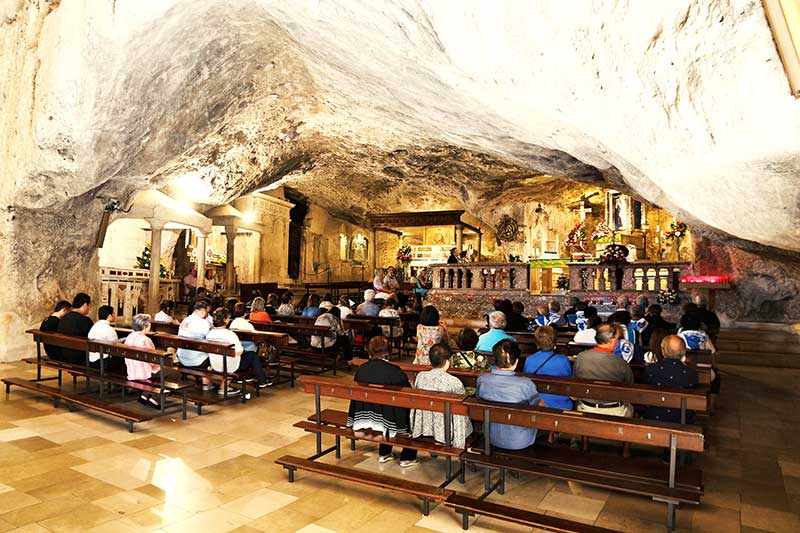
The cave where the Archangel Michael is believed to have appeared
While the catholic church ascribes him the role of psychopomp (the angel who appears at death to take one’s soul to heaven), Michael the Archangel is also given the duty of protecting humankind from all evil. This is exactly the name of the Archangel’s special prayer that invokes his help against evil of every kind. And when, in the 17th century, when the Archangel appeared in a magnificent array for a third time, he told Archbishop Alfonso Puccinelli that people could be healed from the fatal plague sweeping southern Italy if stones from his sacred chapel inscribed with the initials MA were blessed and distributed to all the poor.
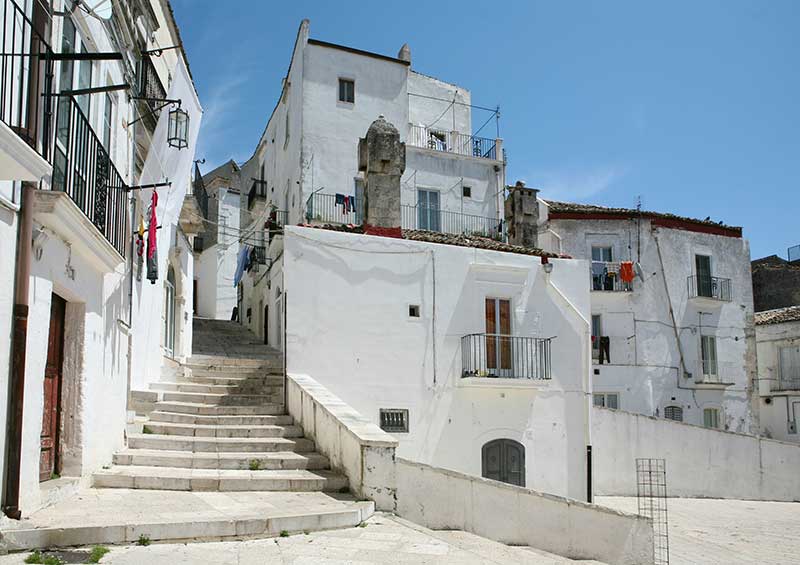
Santangelo
Clearly a grotto-chapel favored by the Archangel, his awesome powers do not cast fear into the hearts of his faithful followers-visitors because, as the inscription over one of the cave’s entrances proclaims: Qui dove i sassi si aprono, i peccati degli uomini sono cancellati, questa è la casa speciale dove qualsiasi azione malvagia viene lavata (Here, where the rocks open, men’s sins are cancelled; this is the special house where any evil deed is washed.” This is an angelic indulgence, given freely unlike some others the Renaissance popes used to raise capital.
Without any doubt this is a place of undeniable religious power that continuously attracts hundreds of visitors who, mindful of the declaration over another entrance, Terribilis est locus iste; hic domus dei est et porta coeli (How awesome is this place: herein lies the House of God and the Gate to Heaven) have caused it to be ranked as a UNESCO World Heritage and an Apulian Heritage Site. And one of the early devotees of this homage to the Archangel was Frederick II , who modified the castle of the place by building a massive watchtower. Here again, it is of an octagonal design which scholars agree is symbol of eternity: the figure eight, so important to him, laid down on its side:
